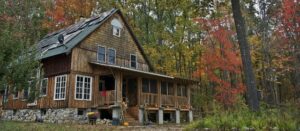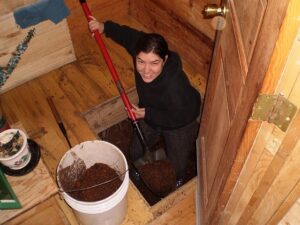Sustainable Living at Agape Community
When human beings live in harmony with the earth, we uphold the sanctity of all life. Because we want to sustain this life into the next generations, we seek to live a wholesome life that sustains itself. This wholesome, holy life on this earth is living into the seasons, a life lived in a circle from birth to the fullness of life, into a death that leads us to a new birth.

In our attempts to discover a sustainable way of being on this earth, we humans must look to invest ourselves in the fullness of life by giving back to the earth and her creatures more than we take from them. This celebrates and strengthens the sacred circle of all life.
We at Agape seek to write a new chapter of Christian Living in our twenty-first century, one that is radically different from the environmental exploitation of the 20
th Century. In loving God as Christians, we reverence the earth that god has created, and we heal ourselves and the damage we have done to our Mother, the earth, by living this healthy, sustainable lifestyle, upholding the sanctity of our God-given lives.
Straw Bale House
Agape’s Brigid House, a 2,500 square foot straw bale house was completed in 1999.
Current solar panels can produce energy for up to 30 years.
Strawbale buildings boast super insulated walls (R-50), simple construction, low costs, and the conversion of an agricultural byproduct into a valued building material. Properly constructed and maintained, the straw-bale walls stucco exterior and plaster interior remain water proof, fire resistant, and pest free.
People have built homes using straw, grass, or reed throughout history.
Each year, 200 million tons of straw are under utilized or just go to waste in this country alone. The U.S. Department of Agriculture indicates that America’s farmers annually harvest enough straw to build about four million, 2,000 square-foot homes each year. That is enough material for nearly four times the houses currently constructed.
Solar Power
Pollution created by the burning of fossils fuels (oil, coal, natural gas) reacts with other gases in the atmosphere creating a greenhouse effect which traps heat that adds to global warming. We also recognize that nuclear power, oil, gas and coal– fuels that are used to make electricity are non-renewable energies. The small but necessary step of putting up solar panels one building at a time means fewer fossil fuels will be burned.
Compost Toilet
A Sight-Built Permaculture Design

Today 40% of all residential water of drinking quality is consumed by flush toilets. It is an inefficient use of the earth’s resources.This out of sight /out of mind flush toilet system creates the need to build sewer systems in an attempt to re-purify the water once polluted. Even well built and maintained septic tank / leach field systems will fail eventually resulting in a major contamination of our groundwater with nitrites.
The objectives of the Agape compost are:
- Achieve safe and sanitary treatment of human wastes
- Conserve drinking water.
- Function with a minimum of maintenance and energy consumption
- Operate without unpleasant odors.
- Be an economically built and integrated part of a variety of house designs
- Recycle so-called “wastes” as composted fertilizer for our fruit trees
- Return to nature the nutrients we consume in a form nature is able to handle, rather than turning them into groundwater or surface water pollutants
 In our attempts to discover a sustainable way of being on this earth, we humans must look to invest ourselves in the fullness of life by giving back to the earth and her creatures more than we take from them. This celebrates and strengthens the sacred circle of all life.
We at Agape seek to write a new chapter of Christian Living in our twenty-first century, one that is radically different from the environmental exploitation of the 20th Century. In loving God as Christians, we reverence the earth that god has created, and we heal ourselves and the damage we have done to our Mother, the earth, by living this healthy, sustainable lifestyle, upholding the sanctity of our God-given lives.
In our attempts to discover a sustainable way of being on this earth, we humans must look to invest ourselves in the fullness of life by giving back to the earth and her creatures more than we take from them. This celebrates and strengthens the sacred circle of all life.
We at Agape seek to write a new chapter of Christian Living in our twenty-first century, one that is radically different from the environmental exploitation of the 20th Century. In loving God as Christians, we reverence the earth that god has created, and we heal ourselves and the damage we have done to our Mother, the earth, by living this healthy, sustainable lifestyle, upholding the sanctity of our God-given lives.
 Today 40% of all residential water of drinking quality is consumed by flush toilets. It is an inefficient use of the earth’s resources.This out of sight /out of mind flush toilet system creates the need to build sewer systems in an attempt to re-purify the water once polluted. Even well built and maintained septic tank / leach field systems will fail eventually resulting in a major contamination of our groundwater with nitrites.
The objectives of the Agape compost are:
Today 40% of all residential water of drinking quality is consumed by flush toilets. It is an inefficient use of the earth’s resources.This out of sight /out of mind flush toilet system creates the need to build sewer systems in an attempt to re-purify the water once polluted. Even well built and maintained septic tank / leach field systems will fail eventually resulting in a major contamination of our groundwater with nitrites.
The objectives of the Agape compost are:
